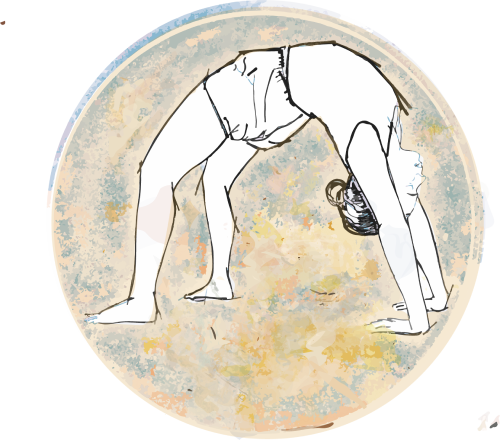What is Iyengar Yoga
“Yoga is one but people call it by different names…Iyengar is my name. My yoga is not Iyengar Yoga. I only codified it… It is a subject which I am teaching which was taught by my Guru who learnt from his Guru. So it is a lineage.”
– B.K.S. Iyengar
While Mr. Iyengar always maintained that Yoga is One, and he only teaches the eight-fold path of yoga as laid down by Sage Patānajali in Yoga Sutra, the term ‘Iyengar Yoga‘ is popular enough to have been listed in the Oxford English Dictionary many years ago. Every modern day asana practitioner is, in some way or the other, influenced by Mr. Iyengar’s exposition of yoga. The yoga block, strap and chair, that are now ubiquitous not just in yoga classes, but also in other forms of fitness and therapeutic yoga, are adapted from Mr. Iyengar’s work.
Iyengar yoga is a robust and progressive methodology of instruction in asana and pranayama. It is characterised by its rigour and precision. These are the very qualities that make it possible to apply Iyengar yoga effectively in a variety of situations, for overall health, for improved performance, and for therapeutic applications.
What characterises Iyengar yoga is also the quality of its instructors. There are no short-term teacher training courses in Iyengar yoga. Certified instructors in Iyengar yoga have undergone many years of learning, and long and continuing mentoring under senior teachers. They are technically qualified to make the asana practice inclusive for students with varying skill levels, and in guiding those who have specific health conditions.
In terms of methodology, what differentiates Iyengar Yoga from the other forms of yoga asana practice?
The Essential Triad of Precisions, Timing and Sequencing
Precision, timing and sequencing are the distinguishing features of Mr. Iyengar’s teaching methodology. These are not rigid rules, but depend on various internal and external factors like aim, age, physical condition, mental condition, time of the day, weather condition etc.
These three should be considered independently, and also together. The triad expects the student to act while she/he is reflecting and contemplating, and demands reflection and contemplation while she/he is acting. We are conditioned to do only one of the two at a point in time.
- Precision
“It is through the alignment of the body that I discovered the alignment of my mind, self and intelligence.”
The technical details are not the complexities, but the intricacies. They provide the means to go beyond the peripheral physical body.
- Timing
“When I am in an āsana, I go beyond the chronological and psychological boundary of time.”
Mr. Iyengar emphasises the aspect of maintaining an āsana to develop, and to surface, the effects, and to reap its benefits. As endurance, power and confidence grows, the timing should be increased.
- Sequencing
Sequencing is important for getting collective and cumulative benefits of āsanas. There is no standard sequence. Much like Indian classical music, there are certain basic elements, and ascending and descending patterns. At the end of the sequence, a state of quietitude and equanimity is expected to be created.
The Use of Props in Iyengar Yoga
“Yoga is for all. I designed props so that all can benefit from it.”
“Body is my first prop.”
A prop is a support. During his early days of teaching, Mr. Iyengar supported his students on his own body, becoming a ‘prop’ for his students.
Props are helpful on multiple levels:
- Those who are patients, or are debilitated, can be initiated. It takes away fear and builds confidence.
- Those who have some proficiency can use props to go on a different plane.
- Those who are adept, are able to mature in their sādhanā.
While most forms of yoga have now started using some or the kind of props, the artistry of their use in Iyengar yoga classes is un-paralleled. But Iyengar yoga is not ‘prop yoga’. A trained instructor introduces props with discretion, and is skillful in their use and arrangement.
Prānāyāma in Iyengar Yoga
“There is a difference between involuntary breathing which is zigzag; deep breathing which is a rough, forceful physiological movement; and prānayāmic breathing in which the energy seeps and touches from the core of the being to the periphery, and from the periphery to the core.”
“Breath is a form of nourishment. Forcing breath is a form of greed.”
Yoga Sutra of Patañjali unequivocally states that the practice of āsana is very important to derive benefits of prānayāma. Only once the body is under control, the spine firm, and nerves calm, can one start prānayāma. In prānayāma practices, the nostrils, nasal passages and membranes, the windpipe, the lungs and the diaphragm are the only parts of the body which feel the full impact of prāna, the breath of life. Improper practice of prānayāma lead to respiratory diseases and the nervous system is shattered. Therefore, while the conditioning and culturing of breath starts as soon as the āsana practice begins, prānayāma is introduced to students only after they have developed some proficiency in their āsana practice.
Integration of the Eight Limbs of Astanga Yoga in Iyengar Yoga
“All the eight petals of yoga are interlinked and interwoven. If one petal is explicit, others are implicit, and that is how yoga works.”
A unique concept in Mr. Iyengar’s teaching is that he does not distinguish the limbs of Astanga Yoga as separate. He has demonstrated how yama and niyama can be observed in āsana and prānayāma. How pratyāhāra is to be attained in and through āsana and prānayāma; and how dhārana, dhyāna and samādhi can form an integral part of āsana and prānayāma.
In order to ensure that these most basic concepts are not coloured by our interpretation, the text in this section is largely derived from publications written by Mr. B.K.S. Iyengar, or put out by RIMYI/ other Iyengar Yoga Associations around the world. All copyrights on content are held by the original sources.
References for the content in this section:
Guruji – An exhibition displayed by the students of RIMYI, Pune as part of Guruji’s 90th birthday celebrations held in Pune.
“What is Yoga”, B.K.S. Iyengar, page 24-25, Yoga Rahasya, Volume 18, No. 3, 2011


